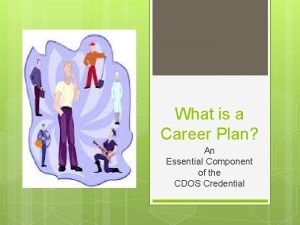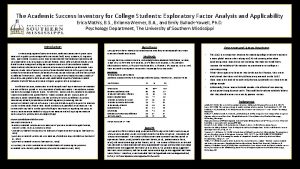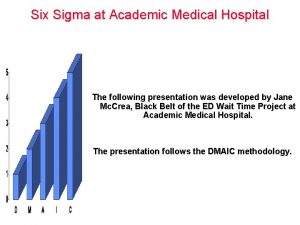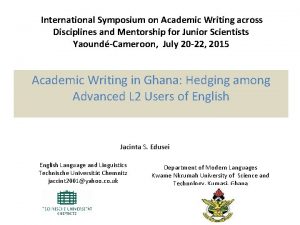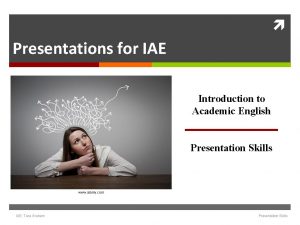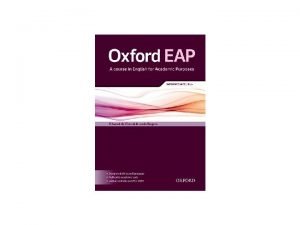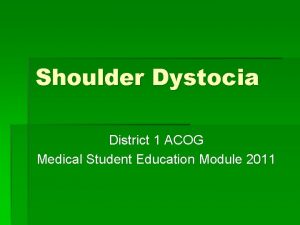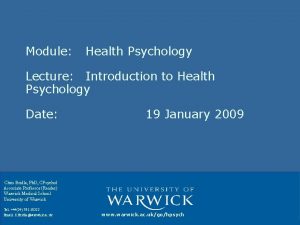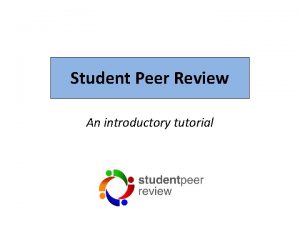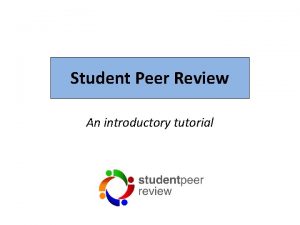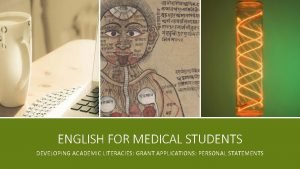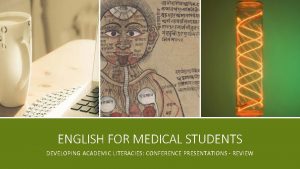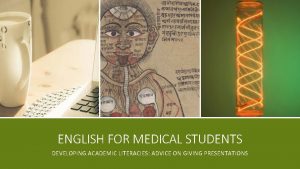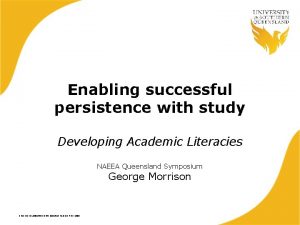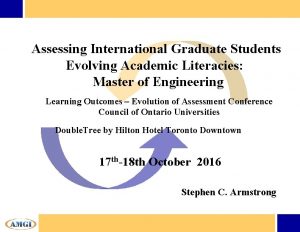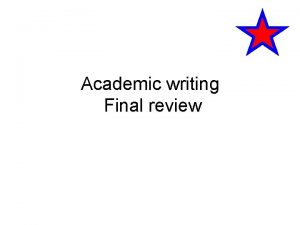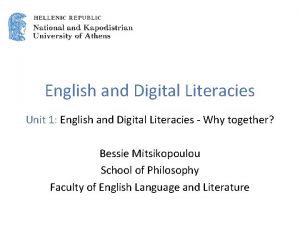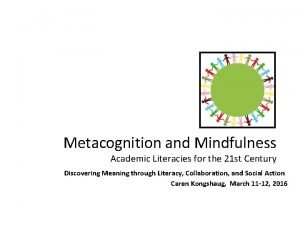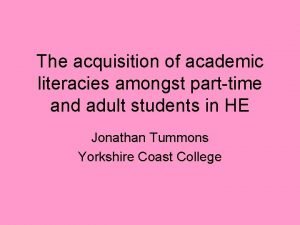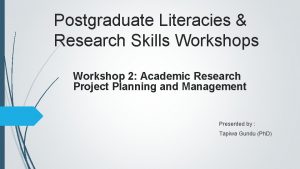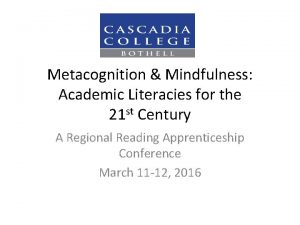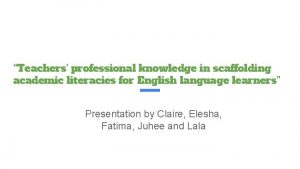ENGLISH FOR MEDICAL STUDENTS DEVELOPING ACADEMIC LITERACIES REVIEW



















- Slides: 19

ENGLISH FOR MEDICAL STUDENTS DEVELOPING ACADEMIC LITERACIES: REVIEW OF ARTICLE WRITING COURSE

THIS AFTERNOON’S SESSION ▪ Feedback/reflection on the research writing course ▪ Q&A

ISSUES AROUND SUPPORT FOR RESEARCH WRITING ▪ Relative lack of support for academic literacies, especially on satellite campuses ▪ Specificity of disciplines ▪ Scale of demand ▪ Pressure on already crowded curricula

RESPONSE ▪ Develop a suite of online resources that can be accessed USP wide ▪ Develop highly specific course materials ▪ Develop self-access/blended learning materials & train facilitators ▪ Scale up provision ▪ Allow flexibility of time

RESEARCH WRITING COMPONENT Assumptions ▪ We are not going to teach research writing in 4 weeks ▪ Evidence suggests that many graduate students learn academic conventions from reading articles in their field ▪ Give support to do this more efficiently: ▪ Drawing attention to generic structures & language used in realising moves & steps ▪ Model texts as illustrations (instructor chooses, exemplifies by video – Office Mix) ▪ Students colour-code and share their own examples of moves/steps for each section of the RA ▪ Students draft a sample article (or part of one), section by section ▪ Develop habit of noticing and ‘stealing’ useful expressions for each move/step ▪ Keep a learning blog during course to reflect on progress & communicate with instructor

RESEARCH ARTICLE COURSE (MEDICINE) ▪ Title and abstract ▪ Introduction (CARS) ▪ Methods (3 videos) ▪ Results ▪ Discussion & conclusion

RANGE OF SUB-DISCIPLINES ▪ Range of subdisciplines: ▪ ▪ ▪ ▪ ▪ Psiquiatria Endocrinologia Nefrologia Gastroenterologia Neurologia Pneumologia Fisiopatologia experimental Medicina preventiva Ciências médicas Doenças infecciosas e parasitárias

INITIAL OBSERVATIONS (MEDICINE) ▪ Diverse research writing expectations, quantitative/experimental versus qualitative (eg Tropical Medicine versus Public Health) ▪ Some drafts already seem at a publishable standard (to me!) ▪ Generic model is seen to be useful though social scientists raise issues about it: ▪ Title and abstract – students earlier unreflective about the function of title/abstract ▪ CARS stage is rhetorically challenging (Logical ‘flow’ of the moves). Thesis versus article. ▪ Methods stage is straightforward (Data collection, experimental procedure, analytical instrument) ▪ Results stage quite diverse (Consistent observations, non-consistent observations). Tendency to include some Methods content in Results; tendency to refer to other research (better placed in Discussion). ▪ Discussion – complex section but also fairly straightforward in execution.

SAMPLE INTRODUCTION: TOPIC GENERALISATION, CLAIMING CENTRALITY & REVIEW OF LITERATURE Bloodstream infections (BSIs) are associated with high rates of morbidity and mortality among hospitalized patients despite advances in atimicrobial therapy and supportive care. In 2017, the World Health Organization (WHO) published a list of priority bacterial agents resistant to multiple antimicrobials and highlighted the importance of hospitals worldwide implementing and strengthening programs that seek to promote the adequate use of antimicrobials in clinical practice. Such programs are known worldwide as "stewardship" and are focused on offering adequate antimicrobial therapy to the patients, without exposing them to sub-treatment. 1 Integrating results from rapid laboratory methods for organism identification and susceptibility testing with an antimicrobial stewardship program (ASP) is crucial for optimizing antimicrobial therapy in patients with severe BSIs, and timely initiation of appropriated antibiotics is associated with improved patient outcomes and decreased healthcare expenditures. 2, 3 Studies have shown benefits with the introduction of this rapid diagnosis tests in daily laboratory practice. A recently published study found a 28% absolute reduction in time for appropriateness of the empiric antimicrobial therapy when MALDI-TOF is used, combined with real time ASP interventions and active communications of results to the prescriber physicians at the intensive care units (ICU), compared with a group without ASP interventions. 4

SAMPLE INTRODUCTION: IDENTIFYING NICHE & ANNOUNCING RESEARCH Although it is evident that optimizing antibiotics use is still a matter of extreme concern, to our knowledge a systematic strategy to control it in Brazil has not been published yet. In fact, there are limited data evaluating the impact of MALDI-TOF implementation on patient outcomes in Brazilian health care. Our group believes that this will be the first national study to be carried out in a public hospital that would highlight the importance of ASP combined with laboratories tools to accelerated the diagnosis of infections as an effective strategy to control indiscriminate use of antimicrobials in intensive care settings. Thus, the aim of this study is to evaluate the impact of rapid pathogen identification with MALDI-TOF combined with AST intervention on clinical and antimicrobial therapy -related in patients with BSIs at the ICU of the Hospital das Clínicas of the University of São Paulo/FMUSP.

MY FEEDBACK ▪ This introduction is well written, but you could rethink the relationship between the 'moves' and the way the introduction flows from one move to another. You spend much of the introduction describing the situation, but then it is not entirely clear what your 'niche' is, or how it relates to the situation described in the opening paragraph. ▪ Basically, the opening paragraph explains the current state of knowledge about antimicrobial use, but the second paragraph opens with an apparently different topic, 'optimizing antibiotics'. What is the relationship between the two? And what is the 'it' that Brazil needs to control? ▪ It is evident that your research is about evaluating the impact of MALDI-TOF implementation on patient outcomes in Brazil, so maybe you need to work back from that. For example, you could show the development of your argument more clearly by indicating: ▪ ▪ 1. Importance of addressing BSIs among hospitalized patients in a context of antibiotic overuse. 2. Recent research into the impact of MALDI-TOF as a means of identifying resistant bacterial agents. 3. Apparent lack of such research in Brazil. 4. Intention to undertake a national study to address this absence. ▪ On a minor point, check 'antimicrobial' in the first sentence, and note the spelling of 'to accelerate'.

ISSUES AROUND ENGLISH AS A MEDICAL LINGUA FRANCA

ISSUES AROUND ENGLISH AS A MEDICAL LINGUA FRANCA ▪ ‘overweight’ as a noun ▪ Lack of ‘move 2’ in this article…assertion of importance of study but little indication of how it extends previous research or fills a gap. ▪ Otherwise a well-written and clearly structured article ▪ Moral: read critically and don’t believe everything you are told…even by me.

ISSUES AROUND ENGLISH AS A MEDICAL LINGUA FRANCA ▪ ‘overweight’ as a noun ▪ Lack of ‘move 2’ in this article…assertion of importance of study but little indication of how it extends previous research or fills a gap. ▪ Otherwise a well-written and clearly structured article ▪ Moral: read critically and don’t believe everything you are told…even by me.

CHALLENGES FOR THE INSTRUCTOR ▪ Coping with technical ‘insider’ texts, eg The genotype distribution of p. P 618 A polymorphism was in accordance with that predicted by the Hardy-Weinberg equilibrium. No significant differences were noted for the p. P 618 A in ADAMTS 13 polymorphisms haplotypes. Either no significant difference between different SNP’s genotype and an ethnicity Caucasian, Japanese and African (table 2). ▪ Feedback: The final sentence does not make sense. What are the 'either/or' alternatives? 'There was either no significant difference between different SNP genotypes and a Caucasian, Japanese and African ethnicity or. . . '

BLOG COMMENTS In this third week of the course, I could understand the structure of the methods section. I learned that the first section of the methods usually describe the data collection, including its size, source and criteria. For this first section, I noticed useful languages such as “inclusion or exclusion criteria”, “patients”, “informed consent form”. I understood that the second section of the methods introduce the research apparatus or instrument, the procedures and the criteria for doing these procedures. In this second section I noticed useful language such as “was applied”, “using the”, “was approved”. In the last section of the methods are described the data analysis procedures, I noticed in this third section useful languages such as “we analyzed”, “we performed tests”, “we calculated”, “statistical analyzes”. I think now is more clear for me about the structure of the methods in the article, and how to organize it to make it clear to the reader as well.

BLOG COMMENTS The Discussion section is the most challenging move on my writing experience. I can’t say how this week’s learnings have blown my mind. Still don’t know how to make it work on my papers from now on, but it was great to have something meaningful to start. Useful language: Overall Research Outcome: “In the context of…” Specific Research Outcomes: “We characterised various factors that affect the…”; “This result is useful in a context in which…” Stating Research Conclusions: “. . . our results provide a baseline to…”

FINAL THOUGHTS ▪ Many experienced researchers report that they have learned to write academic papers by reading them. ▪ This course has sought to recognize that fact and make the process of reading into writing more systematic and effective. ▪ Focus on the conventional structure of academic articles in English. ▪ Focus on the language used to realise the specific moves that are required to make an argument. ▪ Encouragement to ‘notice’ and recycle useful vocabulary and usual grammar. ▪ There is no magic wand. We all struggle. But we improve over time.

OVER TO YOU…FOR YOUR FINAL BLOG AND/OR THE COURSE SURVEY! ▪ Do you feel more or less confident about writing a research article in English after completing this course? ▪ How do you feel about the ‘blended’ mode of course delivery? ▪ Topics for future courses?
 Pretest: developing an academic and career plan
Pretest: developing an academic and career plan Erika mathis
Erika mathis What image did rizal carved on a piece of batikuling
What image did rizal carved on a piece of batikuling Six sigma at academic medical hospital case analysis
Six sigma at academic medical hospital case analysis Academic english reading and writing across the disciplines
Academic english reading and writing across the disciplines Academic english presentation
Academic english presentation Oxford eap
Oxford eap Acog medical student
Acog medical student Aim of health psychology
Aim of health psychology Pathology lectures for medical students
Pathology lectures for medical students Peer review examples for students
Peer review examples for students Best introduction lines for students
Best introduction lines for students Short book review for students
Short book review for students Kontinuitetshantering
Kontinuitetshantering Typiska drag för en novell
Typiska drag för en novell Tack för att ni lyssnade bild
Tack för att ni lyssnade bild Vad står k.r.å.k.a.n för
Vad står k.r.å.k.a.n för Varför kallas perioden 1918-1939 för mellankrigstiden?
Varför kallas perioden 1918-1939 för mellankrigstiden? En lathund för arbete med kontinuitetshantering
En lathund för arbete med kontinuitetshantering Underlag för särskild löneskatt på pensionskostnader
Underlag för särskild löneskatt på pensionskostnader
